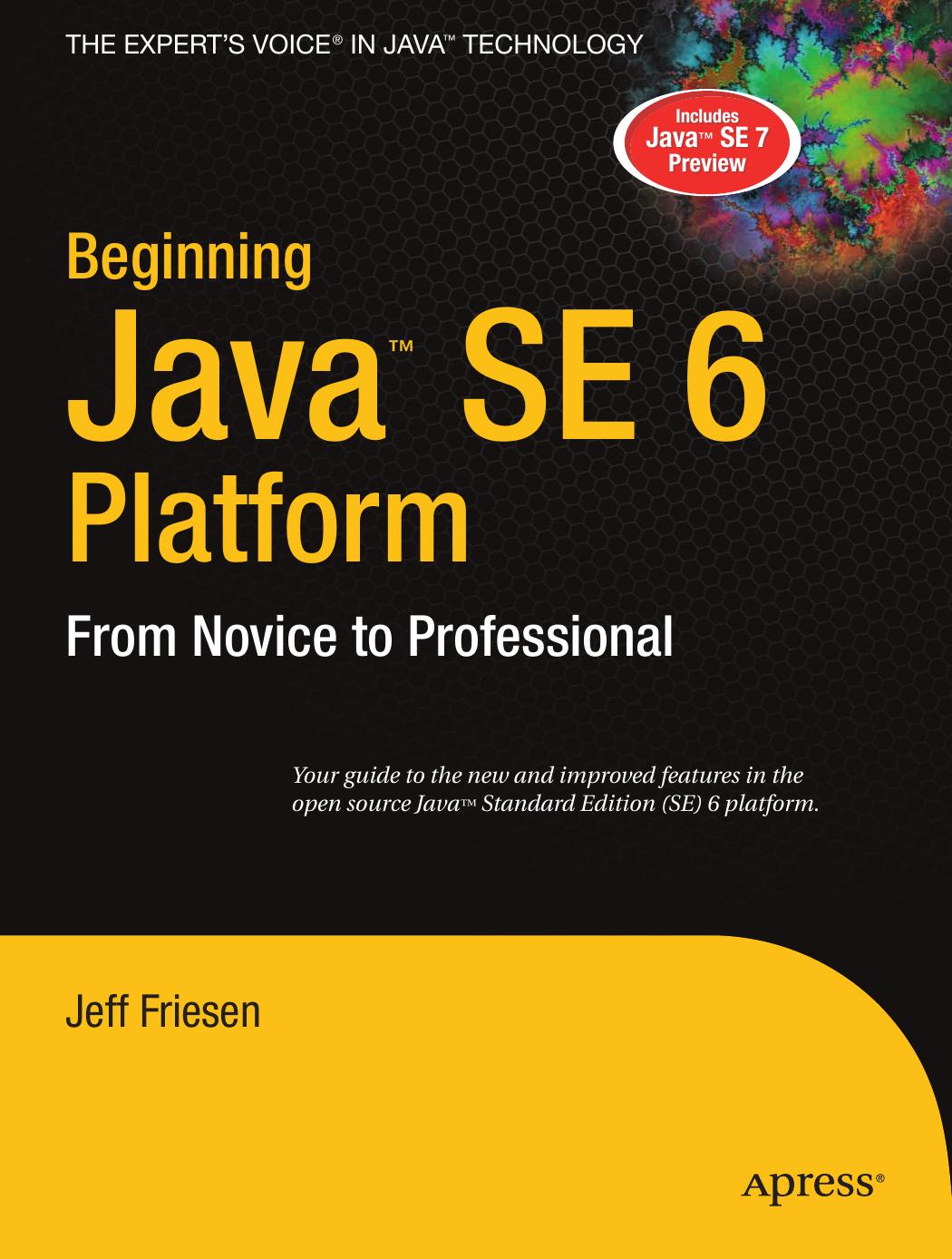Product desciption
Beginning Java Se 6 Platform From Novice To Professional 1st Edition Jeff Friesen by Jeff Friesen 9781590598306, 159059830X instant download after payment.
Beginning Java™ SE 6 Platform: From Novice to Professional steers you through the maze of Java Standard Edition (SE) 6 features. The first chapter sets the stage by introducing Java SE 6 in terms of its name change, themes, an overview, and a sampling of new features. It also briefly discusses the first two Java SE 6 updates.
The remaining nine chapters organize features into the following categories: core libraries, GUI toolkits: AWT, GUI toolkits: Swing, internationalization, Java Database Connectivity, monitoring and management, networking, scripting, and security and web services. While exploring these chapters, you will encounter a variety of useful and interesting topics: introducing a new locale with its own currency, creating a new JConsole plug–in, creating a scripted JEditorPane component, invoking and communicating with JavaFX Script and JRuby scripts from a Java application that interacts with the Scripting API, signing an arbitrary XML document and validating a signed document’s XML signature, and accessing an existing web service are examples.
With a few exceptions, each of chapters 2 through 10 alphabetically organizes its topics for convenient access. Furthermore, all 10 chapters end with a “Test Your Understanding” section that provides questions and exercises to help you reinforce your understanding of what you have read.
Additional features are covered in the first three appendices. The first appendix introduces you to annotation types for annotation processors, Common Annotations 1.0, and several tables that conveniently organize additional annotation types that are new to Java SE 6. The second appendix explores changes made to various Java tools. For example, the Java compiler tool now supports annotation processing—you'll learn how to take advantage of this capability by writing your own annotation processor. Another example: you'll learn how to interact with the command–line script shell. The third appendix looks at a variety of performance enhancements, ranging from a fix for the gray–rect problem to single–threaded rendering.
The second-to-last appendix provides answers and code to all of the questions and exercises in the various “Test Your Understanding” sections. The final appendix anticipates Java SE 7 by looking at features most likely to make the cut, including closures, the Java Module System, and the Swing Application Framework.
By the time you finish this book, you will have mastered most of what’s new and improved in Java SE 6. Although a few features, such as multiple gradient paints and an in–depth look at StAX are not covered, you will find a growing list of articles devoted to these additional topics on the author’s website (JavaJeff.mb.ca).


